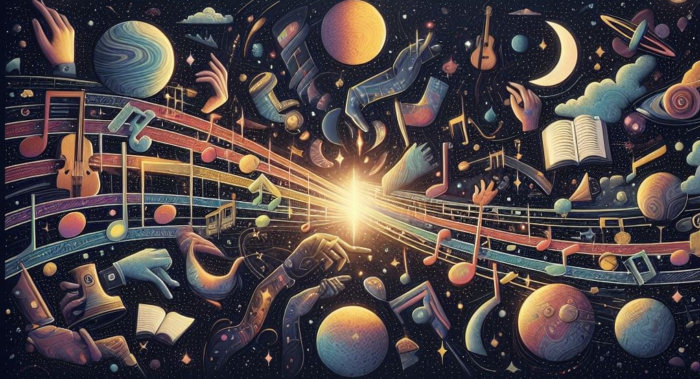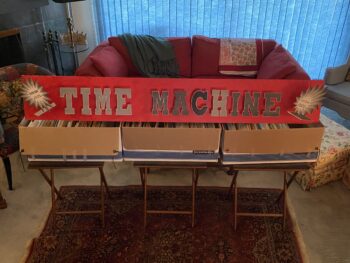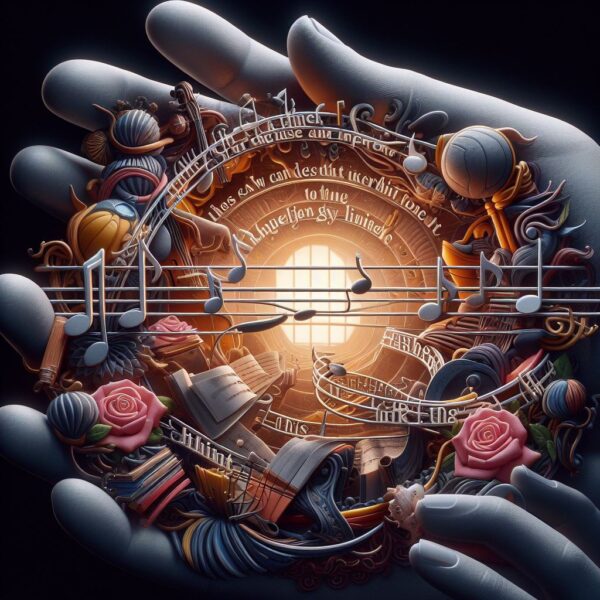Time Machine

Since I was a sophomore in high school (1963) and before, I have kept every note, card, and letter I received, every relevant newspaper clipping, as well. Usually, I would stash these items in large manila envelopes with the date range written on the front (1978 – 1984, for example).
In recent years I have opened the envelopes and read through the contents, reading again the story of a given relationship or a given period of time.
Doing so proved to be a remarkable experience.
I since have filed all items by person and ordered the files according to when I first met the person in question. The result: Pull out a folder, begin reading, and you are back in time—emotionally, viscerally—to the issues and events of a particular relationship or period.
Some people throw personal correspondence away. They let the past go as they move forward with their lives. I could never do that.
I have contacted a few people and asked them if they would like their “folder”. As for the time machine, itself, my plan is to destroy it, all except family items. Perhaps I will request that the time machine be destroyed upon my death. There are personal items, private items that would be of little interest or that should not be shared.
Until that time, however, I cannot bring myself to throw anything away. I still like to “time travel”. I marvel at the experience — joyful, painful, illuminating. Susan Sontag referred to the books in her library as space ships. I feel the same way about the file folders in the time machine. They, too, are space ships, time ships.
I don’t mean to suggest that the making of my time machine represents a particularly unique or creative undertaking. Many people have file cabinets full of correspondence, boxes in the back of their closets that, when unpacked, draw them back to a specific time and place. The only thing I have done is to organize this material and then, read my way through it.
I will say, however, that my experience with the time machine has been very positive. I recommend the building of one’s own. Not without some reservation, of course. Some people may have specific events or relationships in their past far too painful to revisit. Why put yourself through that? But for many people, I do recommend it. I have been surprised by the degree to which I could reacquaint myself with and to a remarkable degree relive the experiences that have enriched my life however those experiences may have been viewed at the time.
In his book, The Unbearable Lightness of Being, Milan Kundera suggests rather strongly as I recall (though it’s been years since I read the book) that we compose our lives. When forks in the road present themselves, we select the path that makes for the better story (though the gift for story-telling varies from person to person). We select the path or are drawn to the path that seems to “rhyme with” or has poetic resonance with what has unfolded so far in our lives.
I do not know if this is so but the time machine does provide access to some of the material of which one’s life is composed. Read through the letters, notes and cards, read between the lines, and you may glimpse (or imagine) a story in the making whether crafted consciously or not.
David Thomas, PhD

Postscript 1
On a similar note: Why do we like a particular song, or a particular piece of music? I was very moved by philosopher Bruce Wilshire’s final book: The Much at Once: Music, Science, Ecstasy, the Body.
Perhaps the following point is Wilshire’s, one of his many points from that remarkable book. Or, maybe it is a point that occurred to me while reading the book. Whatever the case, I found myself wondering…
Do we like a particular piece of music, at least in part, because we can discern within it a “through line”, something that holds the song together, something to which every note and musical departure is connected? To put it another way, do we listen and continue to listen because we glimpse a single idea being expressed, clear from the start or, in many instances, clear only when the music is complete?
How can one not wonder if there is a through line operating in one’s own life, a single idea or aim clear at some point or apparent upon reflection.
The time machine is a meditation device, an opportunity to contemplate the presence of a “through line”, perhaps to glimpse it, certainly to wonder about it.
Postscript 2
The following two images (as well as the image at the top of the page) are a result of feeding the above idea into an AI image generation program (Microsoft CoPilot/Designer): Do we like a particular piece of music because we can discern within it a “through line”, something that holds the song together, something to which every note and musical departure is connected? …by analogy, a single idea or theme or aim to which one’s life is connected?
Postscript 3
And lastly, how do we contribute to the music (to continue the metaphor)? Perhaps in this way, at least:
Assumption #1. Every person—like the shamans of prehistory—has a gift, let’s call it a medicine, that they, themselves, are given or somehow acquire. The task is to find the rituals, practices, procedures, worldview that will make their medicine available to them. This so that they can share it with those who might benefit from it.
Assumption #2. To not find and share your gift, your medicine will make you sick. Is that too severe? It will stand in the way of your fulfillment. Put it that way. That is not an unreasonable assumption. The giving of one’s gift benefits the giver as well as the person to whom it is given, sometimes more so.
Therefore: All flourishing, as Robin Wall Kimmerer wrote in Braiding Sweetgrass, is mutual. We are made (and fulfilled) through our interaction with and contribution to others. It’s an ensemble piece. Put another way: human development and community development are inseparable or largely so, each dependent on and greatly influencing the other.


